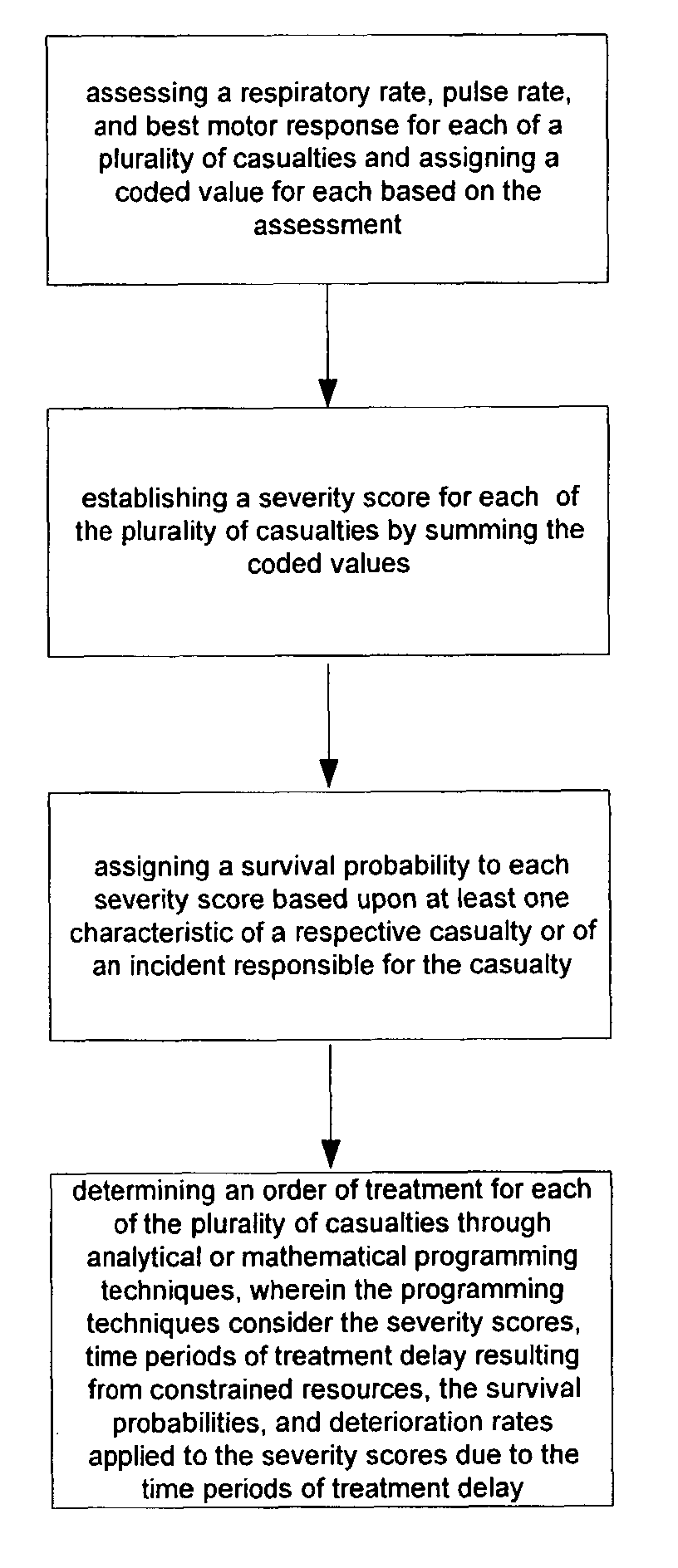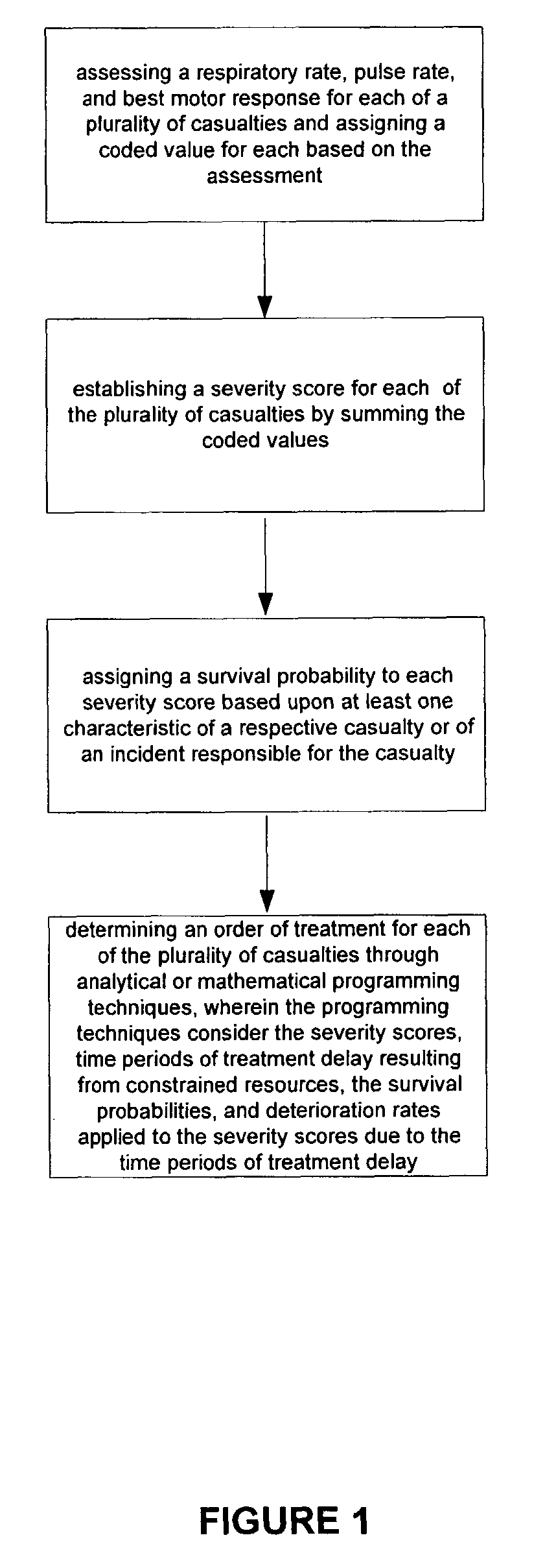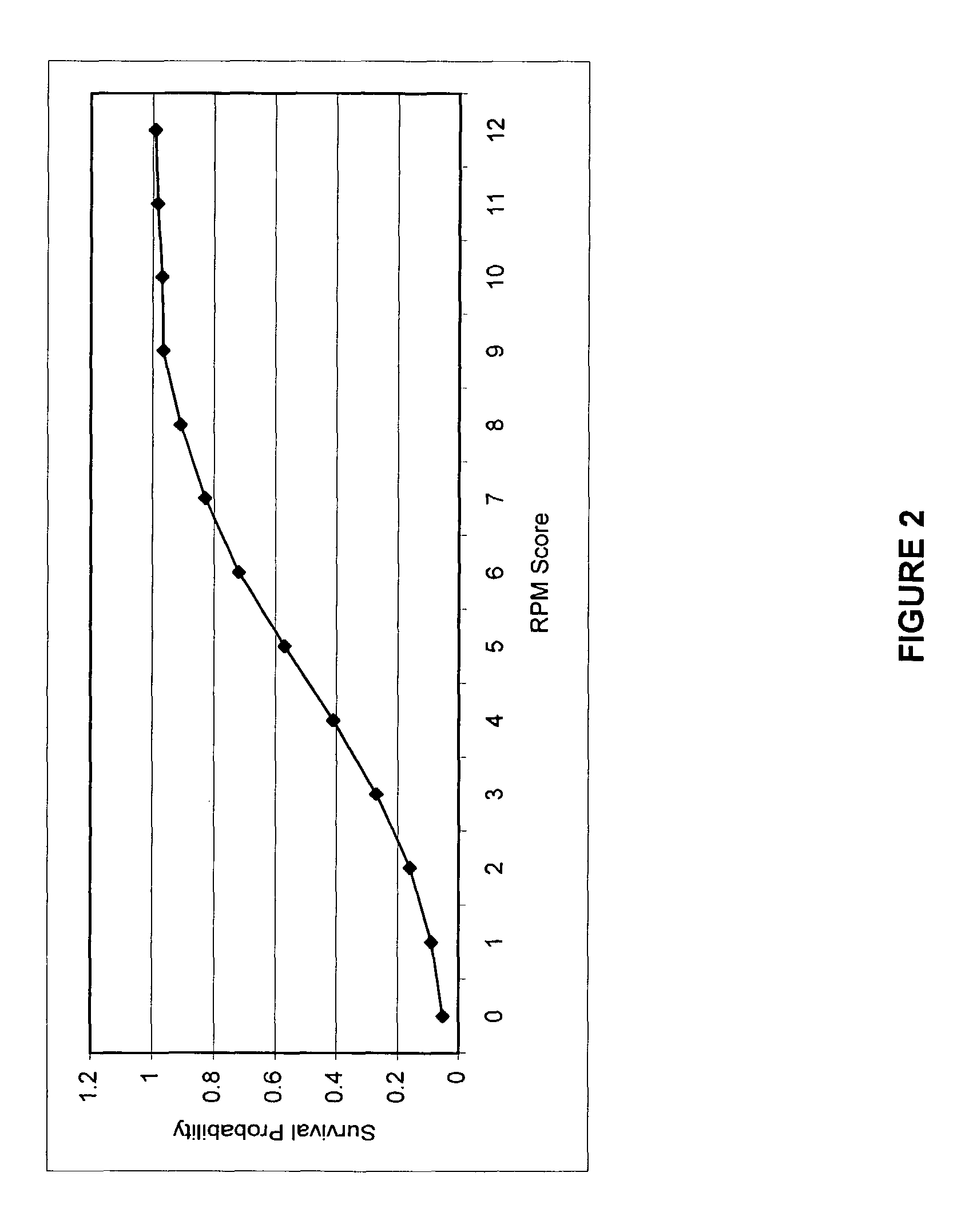Method and system of mass and multiple casualty triage
a multi- and mass casualty technology, applied in the field of multi- and mass casualty triage, can solve the problems of difficult to achieve the effect of honeing the skills of trainees, affecting the survival of patients, and easy overflow of local medical resources
- Summary
- Abstract
- Description
- Claims
- Application Information
AI Technical Summary
Benefits of technology
Problems solved by technology
Method used
Image
Examples
Embodiment Construction
[0025]The present invention provides a method of managing triage for multiple and mass casualty incidents. Generally, the method of the present invention includes the following procedures:[0026]1. Determining a casualty severity score for each victim; and[0027]2. Determining a priority order of treatment for the victims.
[0028]The goal of the present invention is to maximize the expected number of survivors in any multiple or mass casualty or resource constrained triage incident. Achieving this goal requires, as resources become available, determining an order upon which victims will be treated, or upon which victims will be transported for treatment, or some combination thereof.
[0029]Accordingly, determining a priority order of treatment could occur at the incident scene, and be directed to an order of victim transport to a medical facility. Or, the priority order could be directed to an order of initial treatment at the incident scene, with or without further transport to a medical...
PUM
 Login to View More
Login to View More Abstract
Description
Claims
Application Information
 Login to View More
Login to View More - R&D
- Intellectual Property
- Life Sciences
- Materials
- Tech Scout
- Unparalleled Data Quality
- Higher Quality Content
- 60% Fewer Hallucinations
Browse by: Latest US Patents, China's latest patents, Technical Efficacy Thesaurus, Application Domain, Technology Topic, Popular Technical Reports.
© 2025 PatSnap. All rights reserved.Legal|Privacy policy|Modern Slavery Act Transparency Statement|Sitemap|About US| Contact US: help@patsnap.com



